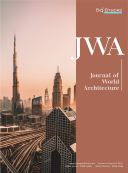Sequential Vision and Disorienting Experience of Garden Space in Asian Context: Comparative Analysis Based on the Residence of Ena de Silva and Xixi Villa
Abstract
The blending of Eastern and Western cultures brought about by colonization was an important reason for the changes in Asian architecture in the 20th century. The passive input of Western design concepts into the local tradition caused a long swing in the design direction. The process of regionalism and global modernism from opposition to gradual integration can be found in the development of a series of Asian architectures. Based on the two architectural works of Geoffrey Bawa and Ge Ruliang, this paper discusses how Asian architects make in-depth regional expressions through garden space.
References
Robson D, 2002, Geoffrey Bawa: The Complete Works, Thames & Hudson, London.
Dong Y, 2017, The Courtyard of Geoffrey Bawa. Architectural Journal, 2017(03): 6–12.
Ge M, Chen J, 2017, A Study of Geoffrey Bawa’s Sectional Design. Architectural Journal, 2017(03): 6–12.
Zhen R, 2016, The Development of Regionalist Architecture in China. Cultural Geography, 2016(10): 211–212.
Lai D, 2019, Regionality: A Resistant Issue and Keyword in Modern Chinese Architecture. New Architecture, 2019(03): 29–34.
Peng N, Wang W, Yao Y, 2017, A Case Study on Ge Ruliang’s Xixi Scenery Spot Reception, Time Architecture, 2017(03): 13–18.
Lu A, 2016, Anonymous Changes: Spatial Analyses of the Transformation of the Liu Yuan in the Twentieth Century. Architectural Journal, 2016(01): 17–23.

